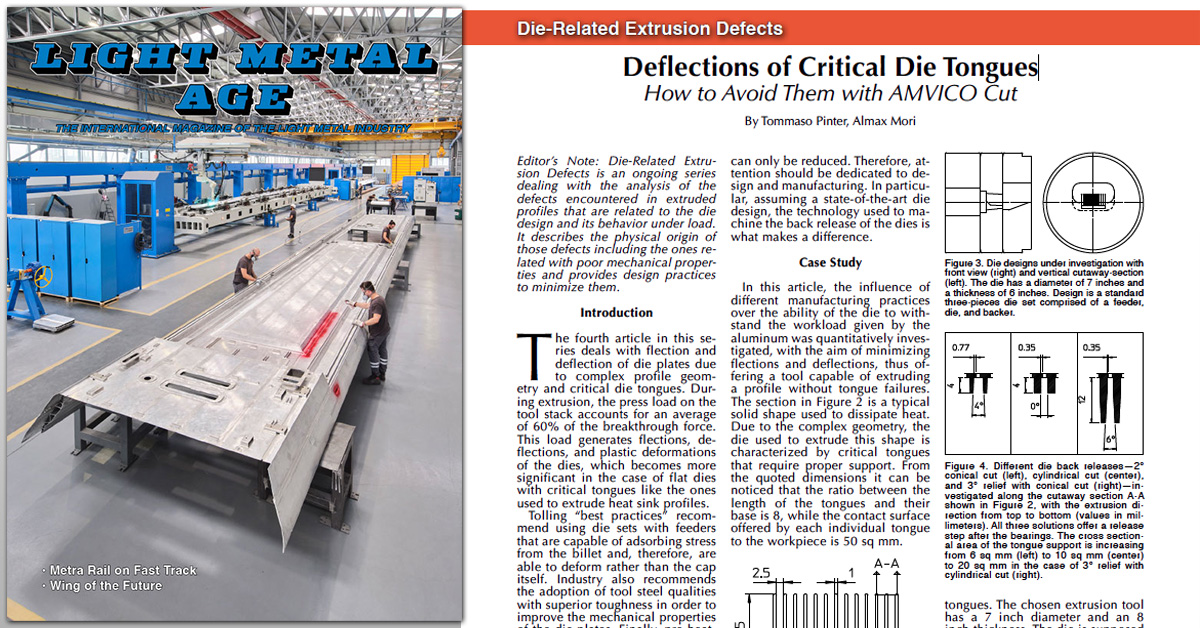
Deflections of Critical Die Tongues
Abstract
How to Avoid Them with AMVICO Cut
Editor's Note: Die-Related Extrusion Defects is an ongoing series dealing with the analysis of the defects encountered in extruded profiles that are related with the die design and its behavior under load. It will describe the physical origin of those defects, including those related to poor mechanical properties and provides design practices to minimize them.
The fourth article in this series deals with flection and deflection of die plates due to complex profile geometry and critical die tongues. During extrusion, the press load on the tool stack accounts for an average of 60% of the breakthrough force.
This load generates flections, deflections, and plastic deformations of the dies, which becomes more significant in the case of flat dies with critical tongues like the ones used to extrude heat sink profiles.
Tolling “best practices” recommend using die sets with feeders that are capable of adsorbing stress from the billet and, therefore, are able to deform rather than the cap itself. Industry also recommends the adoption of tool steel qualities with superior toughness in order to improve the mechanical properties of the die plates. Finally, pre-heating practices and die filling operations are of extreme importance for the successful extrusion of such products.
